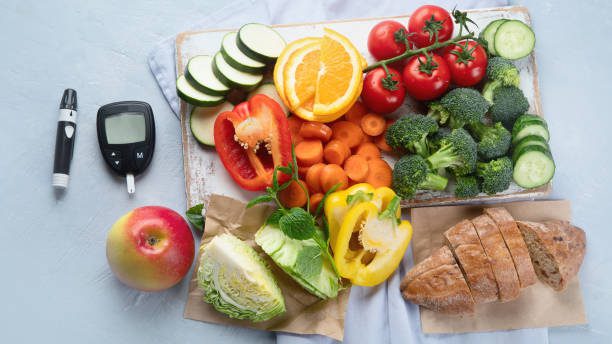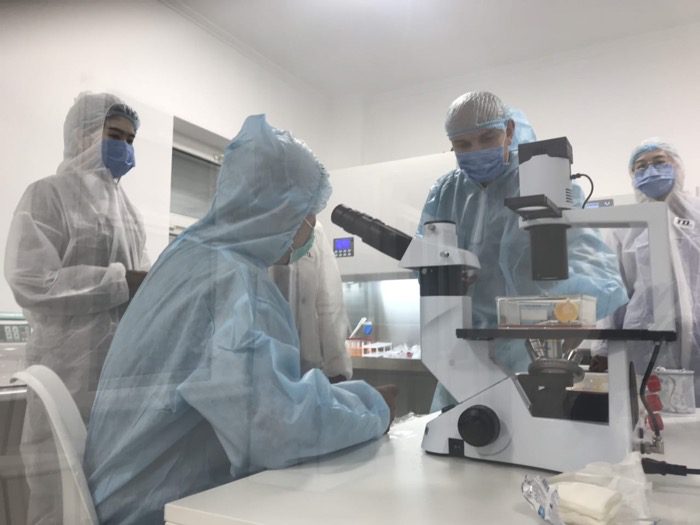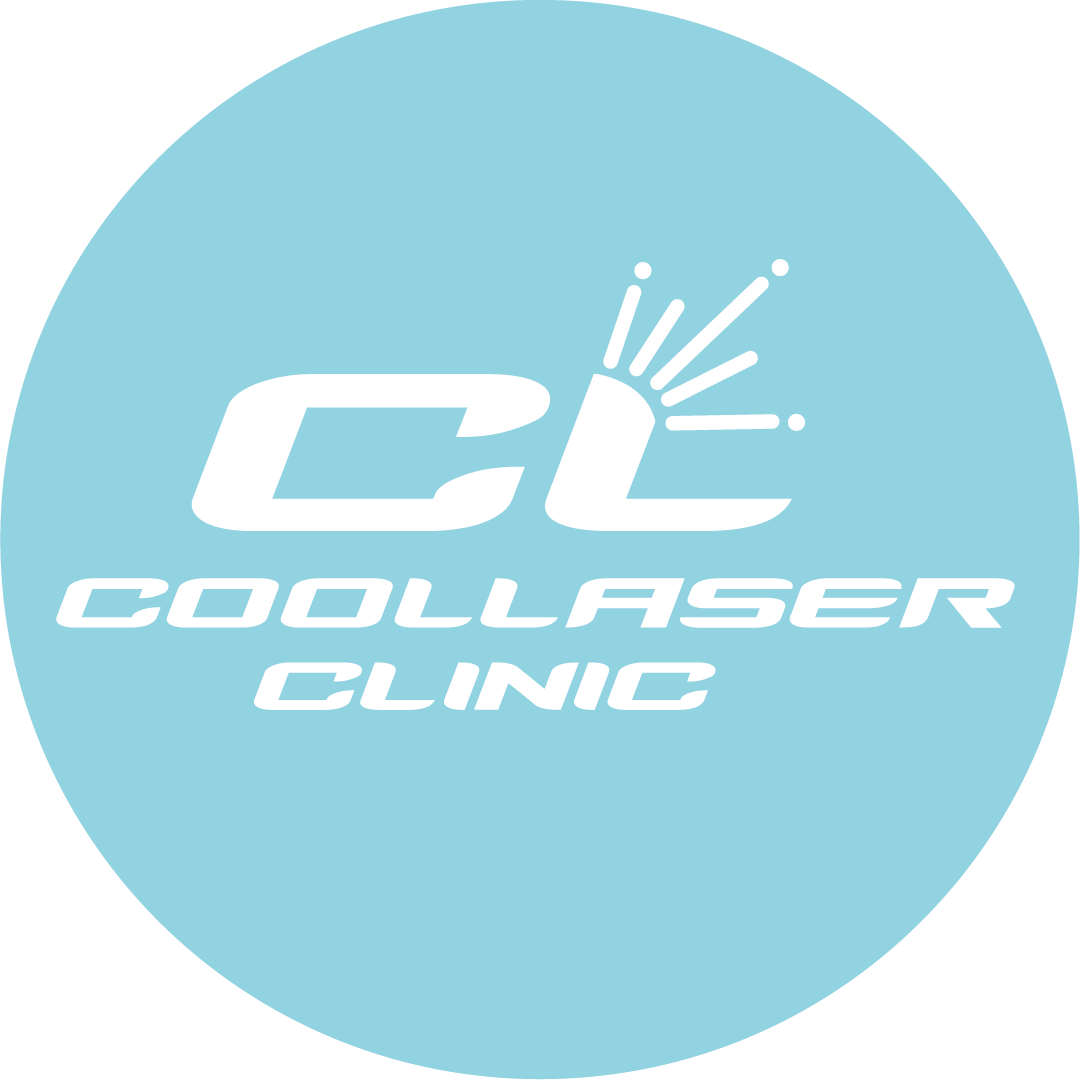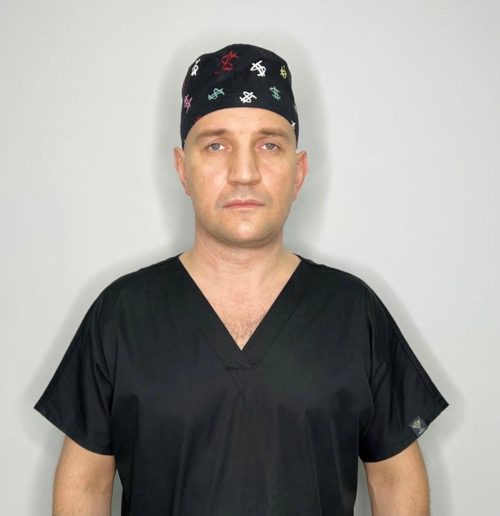How to treat gout and what treatment options are available
Treatment of gout is becoming increasingly important due to the increasing frequency of metabolic disorders in which excess uric acid accumulates in the body. This can lead to the formation of uric acid crystals in the joints, causing inflammation, pain and swelling. Gout (Gout) is one of the oldest known diseases, but in recent decades the disease has acquired new features related to lifestyle and diet.

Gout treatment aims to relieve pain, prevent further exacerbations and reduce the level of uric acid in the body. Important aspects of treatment include drug therapy, dietary and lifestyle changes, and the use of modern medical procedures such as stem cell therapy.
It is important to note that this disease can affect everyone, but men over 40 and menopausal women are most susceptible to it. Early diagnosis and competent treatment help to avoid complications and improve the patient’s quality of life.
Causes of gout
| The cause of gout | Description | Effect on uric acid levels |
| Genetic predisposition | Hereditary tendency to accumulate uric acid. If there has been a family history of gout, the risk of the disease is increased. 👨👩👧👦 | Can lead to high uric acid levels due to genetic metabolic traits. ⚡ |
| Improper nutrition | Excessive consumption of foods rich in purines (red meat, seafood, alcohol, especially beer) contributes to elevated uric acid levels. 🍖🍤🍻 | Increased uric acid levels due to purine-rich foods, leading to the formation of crystals in the joints. 💥 |
| Alcohol abuse | Alcohol, especially beer, interferes with the excretion of uric acid by the kidneys, which contributes to its accumulation in the body and the formation of crystals in the joints. 🍺🚫 | Alcohol impairs the excretion of uric acid, leading to its accumulation in the blood and joints. 💧❌ |
| Хронические заболевания | Diseases such as hypertension, diabetes, and kidney disease can disrupt uric acid metabolism and increase the risk of developing gout. 🩺💉 | Chronic illnesses can reduce the kidneys’ ability to excrete uric acid, which increases its levels in the body. ⚠️ |

Symptoms of gout
Gout has several characteristic symptoms, including:
- Sudden severe joint pain, especially in the big toe.
- Inflammation and redness of the skin around the joint.
- Swelling at the site of the lesion.
- Limitation of mobility.
In an acute attack of gout, symptoms can appear quickly and the patient experiences intense pain, especially at night. These symptoms can last from a few hours to several days.
Areas of damage
Gout is a disease in which an excessive amount of uric acid in the body leads to the formation of crystals in the joints, which causes inflammation and pain. Gout can affect different areas of the body, predominantly the joints, but also other tissues. Here are the main areas affected by gout:

- Big toe
This is the most common area affected by gout, known as “gouty arthritis”. Due to uric acid crystals that accumulate in the joint, there is severe pain, inflammation and swelling. Gout often starts in this particular joint, especially at night. - Knee joints
The knees are also often affected by gout. Inflammation can develop in these joints, resulting in painful movement, limited mobility and swelling. - Ankles and feet
The joints of the ankles and feet can also be affected in gout. These areas experience acute pain attacks and inflammation, especially during periods of exacerbations of the disease. - Fingers
Gout can also affect the joints of the hands, causing pain and inflammation in the finger area. This is less common, but can be a problem if the disease has been going on for a long time. - Wrist
The wrist joints can be affected by chronic gout, which limits mobility and causes pain when the hands are loaded. - Elbows
The elbow joints can be affected in cases of long-term illness, especially if the level of uric acid in the body remains high for a long time. - Auricles
In some cases, gout can manifest itself as uric acid crystal formations in the ear lobes, which is called gouty tofus. This occurs in the chronic form of the disease. - Spine
Gout is less likely to affect the spine, but in some cases inflammation can occur in the joints that connect the vertebrae, causing back pain and limited mobility. - Skin and soft tissues
Uric acid crystals can form not only in the joints but also in the soft tissues. This leads to the formation of toxoids, which are thickened areas of skin often found on the arms and legs.
Gout diagnosis
Diagnosis of gout is based on a comprehensive approach that includes clinical symptoms, laboratory tests and instrumental methods. It is important to keep in mind that diagnosing gout can be difficult, as many symptoms are similar to other joint diseases, such as arthritis.

- Clinical signs and history
At the first stage, the doctor studies the patient’s medical history, identifies characteristic symptoms, such as pain and swelling in the joints. Particular attention is paid to the seasonality of pain (gout usually worsens in the cold season) and the localization of the pain syndrome (big toes are most often affected).
- Blood tests
The main laboratory test is to determine the level of uric acid in the blood. A raised uric acid level can be a confirmation of gout, but it is important to keep in mind that some patients with high uric acid levels may not have gout. Conversely, some people with acute attacks of gout may have uric acid levels within normal limits.
- Ultrasound
This method can detect uric acid crystals in the joints and surrounding tissues. Ultrasound can help in establishing an accurate diagnosis, especially in the early stages of the disease.
- Radiography
Although X-rays cannot show the presence of uric acid crystals, they can help rule out other conditions such as arthritis and identify possible joint damage caused by gout.

Какие способы лечения подагры существуют?
How to treat gout with pharmacy remedies
The use of pharmacy drugs for treatment, including tablets, injections and topical agents, should be carried out only on the prescription of a doctor. The specialist determines the necessary dosage, form of release and treatment regimen depending on the stage of the disease, the patient’s condition and the presence of concomitant diseases. Self-medication can lead to worsening of the condition and the development of side effects, so consultation with a doctor is mandatory for effective and safe treatment.
| Drug group | Example preparation | Dosage | Form of release | Approximate price (UAH) |
| NSAIDs (Anti-inflammatory drugs) | Ibuprofen | 200 mg, 400 mg | Tablets, gel | 50–150 |
| Diclofenac | 25 mg, 50 mg | Pills, gel, ointment | 30–120 | |
| Drugs that lower uric acid levels | Allopurinol | 100 mg, 300 mg | Pills | 100–200 |
| Febuxostat | 40 mg, 80 mg | Pills | 200–350 | |
| Drugs for the treatment of gout | Colchicine | 0.5 mg | Tablets, injections | 500–700 |
| Corticosteroids | Prednisolone | 5 mg, 20 mg | Tablets, injections | 20–100 |
| Methylprednisolone | 4 mg, 16 mg | Tablets, injections | 30–120 | |
| Diuretics | Furosemide | 20 mg, 40 mg | Pills | 10–50 |
| Hydrochlorthiazide | 12.5 mg, 25 mg | Pills | 10–50 | |
| Topical medications (NSAIDs and anti-inflammatory drugs) | Diclofenac | 1% | Gel, ointment | 40–80 |
| Ibuprofen | 5% | Gel | 60–100 |
Treatment of gout with folk remedies
Many people ask the question: how to treat gout with folk remedies using old recipes. However, it should be remembered that this is a chronic disease that requires a comprehensive approach to treatment, including both traditional medical methods and folk remedies. Folk medicine can be used as an additional treatment to relieve symptoms, reduce pain and inflammation, but it is important to remember that a doctor should be consulted before using any folk remedies.

Here are popular folk remedies for treating gout:
- Herbal tincture
- Tinctures based on herbs such as nettle, birch buds or violet herbs are often used to relieve pain and inflammation in gout. They have a diuretic effect and help reduce the level of uric acid in the body.
- To prepare a tincture, herbs are poured with boiling water and insist for several hours. It is recommended to drink the tincture 3-4 times a day, 1 tablespoon.
- Compresses with iodine and aspirin
- This remedy is often used to relieve pain and inflammation in the joints. To do this, dissolve 10 aspirin tablets in 10 ml of iodine and apply the resulting mixture to the affected areas. The compress is left overnight, covering with a film and a warm scarf.
- Cabbage compresses
- Fresh cabbage leaves, due to their anti-inflammatory properties, can help with joint pain. Apply cabbage leaves to the affected joint for several hours or overnight, securing them with a bandage or plaster.
- Burdock root decoctions
- Burdock helps to remove excess uric acid from the body. To do this, you can prepare a decoction of burdock roots, which is used 1/4 cup 2-3 times a day. It has a diuretic effect and helps to improve metabolism.
- Salt and soda
- For external application, you can use baths with the addition of salt and baking soda. Such a solution helps to relieve swelling and relieve pain. The bath should be taken for 15-20 minutes until the water cools down.
- Apple cider vinegar
- Apple cider vinegar helps to normalize the level of uric acid in the body. It is recommended to dilute 1-2 tablespoons of vinegar in a glass of water and drink this solution twice a day to speed up the process of eliminating toxins.
- Garlic and honey
- Garlic has antiseptic and anti-inflammatory properties. A mixture of crushed garlic and honey (in a ratio of 1:1) is recommended to take 1 teaspoon before meals 2-3 times a day. This remedy helps to strengthen the immune system and improve metabolism.
Important Notes:
- Folk remedies can be useful as an adjunctive therapy, but they do not replace the main treatment prescribed by a doctor.
- Before you start using folk remedies, it is important to consult your doctor to avoid possible allergic reactions or interactions with other medications.
- Special attention should be paid to diet and lifestyle, as nutrition plays a key role in controlling uric acid levels in the body.

The role of diet in the treatment of gout
It is very important to follow a diet that excludes foods rich in purines (red meat, seafood, alcohol). Instead, it is recommended to eat more vegetables, fruits and foods low in purines.
Lifestyle tips
Regular exercise, maintaining a normal weight and avoiding bad habits such as smoking and excessive alcohol consumption are important components of effective gout treatment.
New treatments for gout
In recent years, new medical treatments, such as stem cell therapy, have emerged to significantly improve the condition of patients suffering from chronic gout.

Stem cell treatment of gout as an innovative approach
Stem cell therapy is a modern treatment method based on the use of cells that can repair damaged tissues and improve their function. In the case of gout, stem cells help to repair damaged joints and eliminate inflammation.
Benefits of stem cell therapy
Stem cell therapy has several important benefits:
- Fewer side effects: stem cells are initially part of the patient’s body, minimizing the risk of rejection and allergic reactions.
- Accelerate recovery: stem cells promote regeneration of damaged tissues, which helps restore joint mobility.
- Long-term results: patients who have received stem cell treatment can experience improvement over the long term.
How do stem cells help with gout?
In gout, stem cells help reduce inflammation in the joints and promote the repair of damaged cartilage tissue. This can significantly improve the patient’s quality of life, especially in the chronic course of the disease.
Stem cell therapy at Coolaser Clinic
The Coolaser Clinic uses advanced gout treatment methods, including stem cell therapy. This method has shown excellent results in treating joint disease and restoring joint function.

What is stem cell therapy?
Stem cell therapy is a treatment method that uses cells that can turn into different types of cells in the body, including cartilage cells. This can repair damaged joints, restore mobility and reduce inflammation.
How does the treatment procedure work?
Stem cell treatment for gout involves several steps:
- Collection of stem cells from the patient (usually from adipose tissue).
- Preparation of cells in the laboratory.
- Injection of cells into the affected joints using injections.
The procedure is virtually painless and requires minimal recovery time. Patients can return to their normal activities in a few days.
Contraindications for gout treatment with stem cells
Despite its many benefits, stem cell treatment is not a universal solution and is not suitable for all patients. There are a number of factors that may be contraindications to the use of this treatment method.

Which patients may not be suitable for stem cell treatment?
- Severe infectious diseases: If a patient has an active infection in the body, stem cell treatment may be delayed until the patient has fully recovered.
- Uncontrolled Diseases: Patients with severe diseases such as cancer or autoimmune diseases may not be suitable candidates for this treatment.
- Age Limitations: Although stem cell therapy is appropriate for most patients, age over 75 may be a limitation if there are serious health problems.
Possible side effects and precautions
Like any medical method, stem cell therapy can have side effects, including:
- Mild inflammation or swelling at the site of stem cell injection.
- Temporary increase in body temperature.
- Rare allergic reactions or cell rejection, although these are extremely rare.
Patients in our clinic receive a detailed consultation prior to the procedure to rule out possible risks and carry out the treatment with maximum safety.
Our Coolaser Clinic provides advanced gout treatments, including innovative technologies such as stem cell therapy. We pride ourselves on our high quality of care and the results patients can experience after their first treatments.
If you need stem cell treatment for gout and want expert help, contact our clinic for a consultation and evaluation of your condition. We are ready to help you regain your health and joy of life.
Sources:







